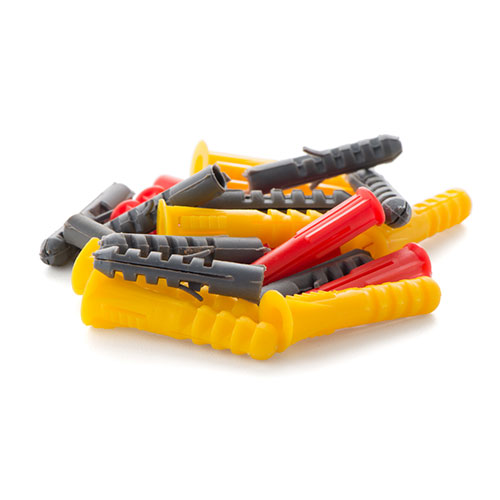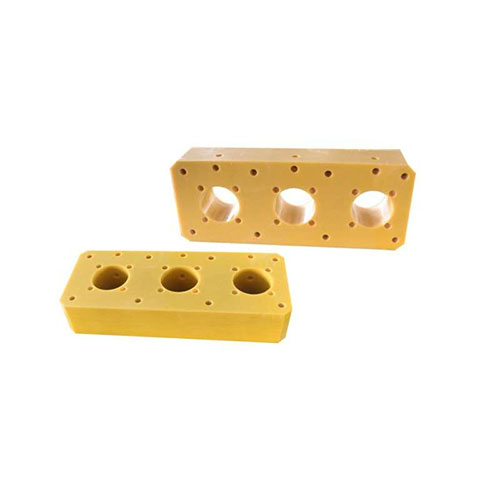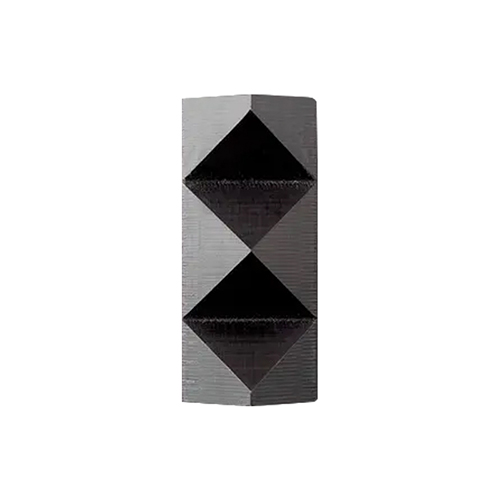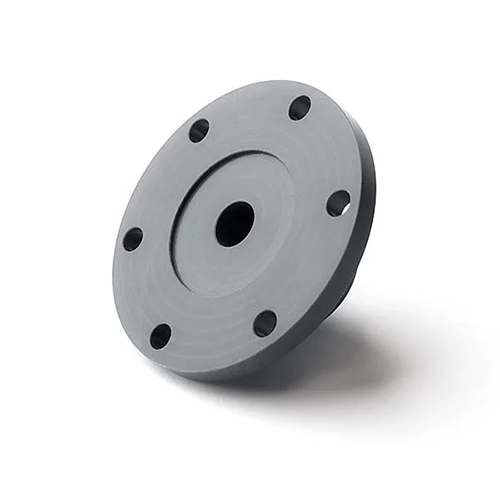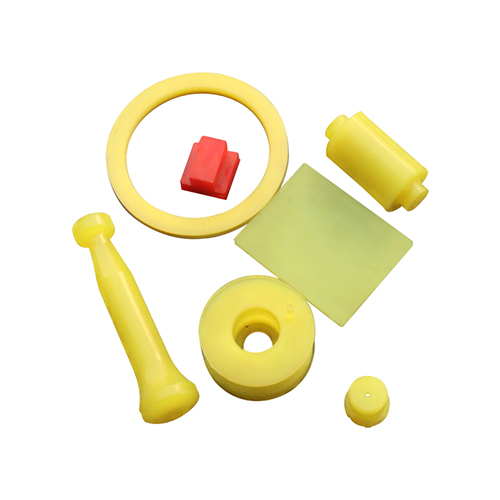PLA 3D Printing Service
Custom PLA 3D Printing Service
NOBLE provides a full range of 3D printing services for rapid prototyping and low- to high-volume production of PLA parts. We consistently invest in advanced technologies and equipment, ensuring we remain at the forefront of the industry. This enables us to tackle complex projects and offer solutions others can’t provide.
- Quote Within 12 Hours
- Competitive Price 30% Cost Save
- 50+ Countries Shipped
- 99.5% On-time Delivery
- Highest PLA Parts Quality, ISO Certified
- World-class Equipment Such As Hermle

Our PLA 3D Printing Capabilities
At NOBLE, we provide custom PLA 3D printing, combining advanced technology with sustainable materials. PLA offers an eco-friendly solution without compromising quality, and we’re here to bring your designs to life. From prototypes to production runs, we deliver high precision and exceptional craftsmanship every time.
| Price | $$$ |
| Lead Time | < 5 days |
| Wall Thickness | 0.047 in. – 0.140 in |
| Tolerances | +/- 0.003 in. (0.08mm) with an included resin tolerance that can be greater than but no less than +/- 0.002 in./in. (0.002mm/mm) |
| Max Part Size | 20 in. x 29.3 in. x 8.2 in |
| Available PLA at NOBLE | Standard PLA, High-Strength PLA (Enhanced PLA), PLA+ (PLA Plus), Transparent PLA, High-Temperature PLA |

Characteristics of PLA 3D Printing Materials
PLA is an ideal material for 3D printing due to its easy machinability, low cost, and smooth surface finish, making it perfect for rapid prototyping and low-volume production, though its low heat resistance requires careful handling.
| Features | Info |
| Subtypes | Standard PLA, High-Strength PLA (Enhanced PLA), PLA+ (PLA Plus), Transparent PLA, High-Temperature PLA… |
| Process | 3D Printing, Injection Molding, Extrusion, Blow Molding |
| Tolerance | +/- 0.003 in. (0.08mm) with an included resin tolerance that can be greater than but no less than +/- 0.002 in./in. (0.002mm/mm) |
| Applications | Automotive industry, Automation parts, New Energy, Medical Devices, Robotics Parts, Aerospace Parts |
| Finishing Options | Polishing, Sand Blasting, Painting, Chemical Polishing, Tumbling |
Pros and Cons of PLA for 3D Printing
PLA is cost-effective and easy to 3D print, ideal for rapid prototyping, but its brittleness and low heat resistance require careful handling. With NOBLE’s advanced equipment and skilled engineering team, we enhance the strength and precision of your PLA parts, helps you gain a competitive edge and stand out in the market.
Ease of 3D Printing
PLA is easy to 3D print, with good flow characteristics during cutting. It requires less force and tool wear compared to other materials like ABS or polycarbonate during 3D printing, making it ideal for rapid prototyping and low-volume production.
Eco-Friendly and Biodegradable
Made from renewable resources like corn starch, PLA is biodegradable and environmentally friendly, offering a sustainable option for projects focused on reducing their environmental impact. This makes it especially valuable for industries prioritizing sustainability.
Good Surface Finish
PLA provides an excellent surface finish, reducing the need for additional post-processing. The material can be polished to a smooth, high-gloss appearance through 3D printing, making it ideal for consumer products or aesthetic prototypes where appearance matters.
Low Cost
PLA is one of the more affordable thermoplastics available, especially suitable for prototyping and small-scale production. This cost-effectiveness allows manufacturers to quickly iterate designs without significant material expense, reducing overall production costs.
Low Shrinkage and Warping
PLA has minimal shrinkage and warping, making it stable during the cooling process. This characteristic ensures dimensional accuracy and precise parts when 3D printing, ideal for applications requiring tight tolerances.

Low Heat Resistance
PLA has a low glass transition temperature and melting point, which makes it vulnerable to deformation when exposed to heat. High temperatures generated during 3D printing can soften the material, requiring cooling systems to manage heat.
Brittleness
PLA is more brittle compared to other thermoplastics like ABS or nylon, which means it can crack or fracture under impact or stress. Careful handling and tooling are necessary to prevent part breakage during 3D printing or in finish processing.
Limited Chemical Resistance
PLA’s resistance to strong acids, bases, and solvents is limited. Exposure to harsh chemicals can lead to material degradation. This restricts its use in applications where chemical exposure is a concern, requiring careful material selection for specific environments.
Not Suitable for High-Temperature Applications
PLA is not suitable for parts exposed to high temperatures due to its low heat deflection temperature. It tends to soften and lose structural integrity under elevated temperatures, limiting its use in high-performance environments.
Limited Durability for Structural Parts
Although PLA is strong for its weight, its low impact resistance and fragility make it unsuitable for high-stress or long-term structural parts. It is better suited for prototypes or non-load-bearing applications where strength is not a primary concern.

Types of PLA 3D Printing Materials
Each PLA variant offers unique properties for different 3D printing needs. NOBLE’s expert engineers will develop customized solutions, delivering high-quality PLA parts from design to final product. Stay ahead of the competition with rapid prototyping and production, driven by our innovative solutions.

Standard PLA
Standard PLA is widely used in 3D printing and 3D printing for its strength, stiffness, and smooth finish. While ideal for prototyping and low-stress parts, its low heat resistance limits high-temperature use. Careful heat management is needed during milling or turning.
Tensile Modulus: 3,500–4,000 MPa
Tensile Strain (Yield): 6–8%
Rockwell Hardness: 70–80 R
Heat Deflection Temperature: 130–150°F

High-Strength PLA (Enhanced PLA)
High-strength PLA is enhanced with additives to improve tensile strength and heat resistance, making it ideal for functional prototypes and components under moderate stress. It offers better dimensional stability and performance while maintaining the ease of 3D printing found in standard PLA.
Tensile Modulus: 4,000–6,000 MPa
Tensile Strain (Yield): 4–6%
Rockwell Hardness: 80–90 R
Heat Deflection Temperature: 150–160°F

PLA+ (PLA Plus)
PLA+ is a modified PLA, blended with toughening agents for improved impact and heat resistance. It combines PLA’s biodegradability with enhanced toughness, resilience, and the ability to withstand higher temperatures and mechanical stresses. PLA+ is ideal for applications like automotive parts and enclosures.
Tensile Modulus: 3,500–5,000 MPa
Tensile Strain (Yield): 4–6%
Rockwell Hardness: 80–90 R
Heat Deflection Temperature: 160–180°F

Transparent PLA
Transparent PLA shares properties with standard PLA but offers a clear, glass-like finish, ideal for applications requiring optical transparency, such as display panels and containers. While easy to 3D print, care must be taken to avoid scratches or surface defects that can impact its clarity.
Tensile Modulus: 3,500–4,000 MPa
Tensile Strain (Yield): 4–6%
Rockwell Hardness: 70–80 R
Heat Deflection Temperature: 130–150°F

High-Temperature PLA
High-temperature PLA is engineered to withstand higher heat deflection temperatures, making it ideal for parts subjected to thermal stress. It performs well in 3D printing at elevated temperatures, though heat buildup must still be managed to ensure optimal 3D printing results.
Tensile Modulus: 3,500–5,000 MPa
Tensile Strain (Yield): 6–8%
Rockwell Hardness: 80–90 R
Heat Deflection Temperature: 190–230°F
Surface Finishing Options for PLA 3D Printing
Surface finishing improves both the durability and appearance of custom PLA parts, offering added protection against corrosion and wear. At NOBLE, we provide a range of surface finishing options, including polishing, sand blasting, painting and so on. Each finish delivers unique benefits, allowing you to select the best option for your specific needs.

Polishing
Working on metal and hard plastics, our polishing uses highly efficient machinery to get our parts between Ra 0.8~Ra0.1 for a cleaner surface.

Band Blasting
Band blasting cleans the surface of any impurities and peels coating through the propelling of blast media streams over the parts.

Painting
Painting involves Spray droplets can be dispersed uniformly or in fine amounts to cover a wide surface area and bring out greater color to the part.

Chemical Polishing
Utilizes chemical reagents to selectively dissolve uneven areas on the surface of a sample, thereby eliminating grinding marks and achieving an etching and flattening effect.

Tumbling
Tumbling PLA smooths its surface, often resulting in a matte finish. It’s used for deburring or preparing PLA parts for further finishing or aesthetic enhancement.
Custom PLA 3D Printing Parts Display
Check out our over a decade of custom PLA 3D printing, including precision PLA prototypes and parts from our valued customers.
Applications of PLA 3D Printing
Aluminum CNC machining is widely used in industries such as aerospace, automotive, electronics, and medical devices for producing lightweight, high-precision components like aircraft parts, engine blocks, enclosures, and surgical instruments.

Automotive Parts
PLA is used for prototyping and creating concept models of interior parts, lightweight enclosures, and non-structural automotive components. PLA’s low cost and ease of 3D printing make it ideal for early-stage design testing. However, its brittleness, low impact resistance, and poor heat tolerance limit its use in high-performance parts like engine components, chassis, or braking systems.

Automation Industry
PLA is commonly used for prototyping and producing test fixtures, non-load-bearing parts, and enclosures in automation systems. Its ease of 3D printing allows rapid development of functional prototypes. However, due to its brittleness and low heat resistance, PLA is not suitable for high-stress or high-temperature components in automated machinery.

New Energy
PLA finds application in new energy sectors for prototype components like solar panel mounts, battery housings, and wind turbine parts. Its biodegradable and easy-to-3D print characteristics make it suitable for concept designs and small-batch production. However, PLA’s limited heat resistance restricts its use in energy components that require high durability or long-term performance.

Medical Devices
In the medical field, PLA is used for creating prototypes of surgical instruments, medical models, and training aids due to its biocompatibility and non-toxicity. It can be easily 3D printed to create functional prototypes for testing. However, its limited strength and low heat resistance make PLA unsuitable for implantable medical devices or parts that require high durability or exposure to harsh environments.

Robotics Parts
In robotics, PLA is used primarily for prototyping and creating structural components such as robotic arms, sensor mounts, and frames. PLA is ideal for quick iterations of parts, thanks to its easy 3D printing. However, its low mechanical strength and brittleness make it unsuitable for high-performance or load-bearing parts in functional robotic systems.

Aerospace Parts
In aerospace, PLA is used for creating concept models, mock-ups, and prototype components during the initial stages of design. Its ease of 3D printing makes it ideal for aerodynamic testing and low-volume production. However, PLA is not suitable for functional aerospace parts due to its low strength, brittleness, and low heat resistance, which are critical in aerospace applications that require high durability and extreme conditions.
If you are looking for a rapid prototyping manufacturer or a CNC machine shop to fabricate small, medium-volume, or mass-production products, NOBLE is an ideal choice.Our well-trained and experienced staff manufactures parts in line with drawings on modern CNC machines, with the highest accuracy and processing quality in all sizes.In addition, we provide professional design considerations for your CNC machining projects.
Want to get the most professional and fastest service for your CNC machining project? Upload your CAD files now and obtain a quote!

